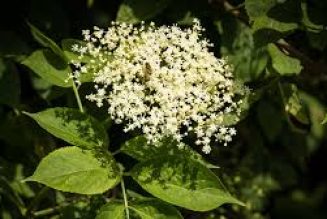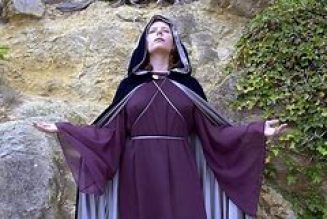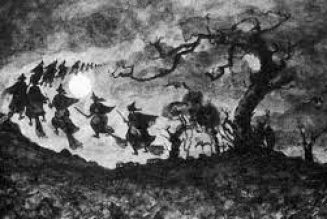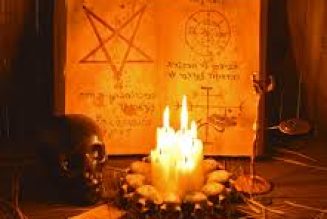AVEBURY (nr Marlborough, Wiltshire)
One of Britain’s most well known stone circles, dating from around 4000 years ago and originally consisted of 180 stones. Today it is possible to see two stone circles surrounded by an outer circle. The larger circle is surrounded by a henge and at the southern entrance; the stone avenue used for processions still stands.
BOSCAWEN-UN STONE CIRCLE (nr Lands End, Cornwall)
Famous stone circle that is still used by the Cornish Gorsedd today. Many votive offerings have been found here, and the whole place has very much a faery ring feel to it. The central impressive stone is made of quartz.
BRYN-CELLI-DDU BURIAL CHAMBER (nr Llandaniel Fab, Anglesey)
This Stone Age burial mound is around 4000 years old. A short passage leads to the central chamber, which has an upright stone that is believed to have been used in rituals. Outside is a replica standing stone with spiral marks on it, though the original is in the National Museum of Wales.
BUTSER HILL (nr Petersfield, Hampshire)
An Iron Age farm was found here and has been reconstructed at the famous Ancient Farm Project. The site is also an ancient hill fort and abounds with barrows, and has been used by local pagans today for ceremonies.
CADBURY CASTLE (Dorset)
No relation to the chocolate company, this ancient hill fort is said to be the site of King Arthur’s Camelot. The ramparts date from the Iron Age, but the place was well occupied into the Saxon times.
CALLANISH STANDING STONES (Lewis, Western Isles)
A unique cross shaped arrangement of standing stones dating from around 3000 BC can be seen here. This is a rare construction from this time, and local legends abound. It is believed that the Stones may have stellar alignments.
CASTELL DINAS BRAN (nr Llangollen, North Wale)
This Iron Age hill fort was well used right into the Middle Ages. The name Bran comes from the Celtic hero King, whose head is said to be buried at Tower Hill in London. The site is also said to be the resting place for the Holy Grail.
CASTELL HENLLYS (Pembrokeshire, Wales)
This ancient Iron Age hill fort has been reconstructed with three roundhouses. The site was used for the programme ‘Surviving the Iron Age’.
CASTLERIGG (nr Keswick, Cumbria)
This site consists of 33 standing stones, including the King Stone, and is generally thought to be one of the oldest stone circles in Britain. Set into the mountains of the Lake District, this place has appeared on many book covers. The place has suffered from seismic disturbances, but it doesn’t distract from the beauty.
CERNE ABBAS GIANT (Dorset)
This famous naked figure holding a club is believed to be 1500 years old, and thought to be either Hercules or a local Celtic god. Local legend states that any maidens who sleep on the giant will surely become pregnant.
DANEBURY RINGS (nr Andover, Hants)
This is the well preserved site of an Iron Age hill fort. Excavations from the place suggest that it was quite well developed with streets at the time of the Romans.
DIN LLIGWY ANCIENT VILLAGE (nr Llanallgo, Anglesey)
This is the remains of a Romano-Celtic village that was finally abandoned in the 5th century AD. The remains of a Chieftain’s dwelling complete with hearth, workshop and ritual place with an altar can still be seen here.
GLASTONBURY (Somerset)
The legendary site of King Arthur’s island paradise, Avalon. It is said that Arthur and his queen Guinevere are buried in the ruins of the Abbey. It is also believed that the Holy Grail lies below Chalice Spring on the Tor. Also, Glastonbury Tor itself is believed to be the entrance to the Land of the Faeries.
IONA (off Mull, Argyll and Bute)
This sacred isle was once home to the early Celtic Christians. St Columba built the earliest monastery here in 563 AD. The burial place of 48 Scottish kings, the abbey seen today dates from the 13th century and the oldest surviving relic is St Martin’s Cross, dating from the 10th century.
LINDISFARNE (Northumberland)
Otherwise known as Holy Island, this place was first founded by St Aidan of Iona who built a monastery in 635 AD at the request of King Oswald. The place soon developed a reputation for scholarship and was plundered by the Vikings around 875 AD. The last of the monks left at the time of the Reformation.
LONG MAN OF WILMINGTON (nr Eastbourne, Sussex)
This famous chalk figure stands on Windover Hill. The Long Man (or Woman), holds two poles, one either side, suggesting a doorway beyond. It is not known how old this site may be, perhaps 2000 years old at least.
LONG MEG AND HER DAUGHTERS (nr Penrith, Cumbria)
One of the largest stone circles in Britain, dating from the Bronze Age. Long Meg herself is a large sandstone heel stone said to be a local witch turned to stone, and it has interesting cup and ring marks and is oddly outside the circle. The other remaining 70 odd granite stones are believed to be her coven.
MAES HOWE AND MINE HOWE CHAMBERED CAIRNS (nr Kirkwall, Orkney)
Was recently the subject of a ‘Time Team’ dig. These are fine (if abit spooky) examples of megalithic cairns. They have large mounds that cover a stone built passage leading into a burial chamber inside. Mine Howe is though to be the more ritualistic, whilst Maes Howe was broken into by the Vikings.
MAIDEN CASTLE (nr Dorchester, Dorset)
This is one of the finest surviving Iron Age hill forts in Britain. Its enormous earthworks make it an unmissable sight, linked with ramparts and entrances. Sadly, its defences were not enough to hold of the Roman army and the fort fell in AD 43, leading to most of the inhabitants being killed.
MEN-AN-TOL (nr Lands End, Cornwall)
Famous three stone monument, looking like a prehistoric ‘101’. It is traditional to climb through the ‘O’ or holed stone nine times as a cure for disease and as an aid to fertility and safe childbirth.
MERRY MAIDEN’S STONE CIRCLE (nr Land’s End, Cornwall)
Another famous Cornish monument, the Maidens are said to be have star alignments. Local legend has it that the Maidens were a bunch of maidens turned to stone for dancing long after a party on a Sunday.
MONA (Anglesey)
Otherwise known as Holy Island, this is the place where the last of the Druids were massacred by the Romans at the time of the Boudiccan revolt in AD 69. For this alone reflect on what was lost, but also on what has been gained since then.
NEWGRANGE (nr Drogheda, County Meath)
This is the famous Irish passage tomb near the Boyne. Dating from around 3000 BC, this Neolithic monument is well known for its spiral carvings inside, and the fact that the sun makes its entrance as a ray of light through an aperture at the Winter Solstice down the passageway to the end of the tomb.
OLD SARUM (nr Salisbury, Wiltshire)
This great hill fort was first built in the Iron Age and was taken over in later times by the Romans, Saxons and Normans. At the time of the Normans, it reached its peak and had a castle along with a cathedral. By the Middle Ages, the settlement had fallen into disuse with the construction of modern day Salisbury’s cathedral.
POULNABRONE DOLMEN (County Clare, Eire)
Spectacular portal burial chamber, very much a gateway to the stars. Dating from around 2500 BC, this is one of Ireland’s finest surviving monuments.
ROLLRIGHT STONES (nr Chipping Norton, Oxfordshire)
These three groups of stones are known as the Kings Men, the Whispering Knights and the Kings Stone. They were constructed round the Neolithic to Bronze Ages. An old tale recounts how Mother Shipton changed a local king and all his men into the standing stones that we see today.
SEAHENGE (nr Flag Fen, Norfolk)
Sadly there isn’t much left of this now. Subject to an English Heritage excavation recently, this consisted of one of the rarest timbered circles dating from the Bronze Age. The great central timber was removed for conservation work. However, a reconstruction does stand nearby built by the ‘Time Team’ programme.
SILBURY HILL (nr West Kennet, Wilts)
Part of the Avebury complex. This artificial prehistoric mound dates from the Neolithic period and is the largest of its type in Europe. Sadly, has been subject to some collapse in recent times due to past excavations. It is not known what this was used for, though it is thought to have been processional.
SKARA BRAE PREHISTORIC VILLAGE (Kirkwall, Orkney)
Local legend has it that you only have to scratch the surface of Orkney to find archaeology. Here we have one of the best preserved groups of Stone Age houses in Europe. It laid buried beneath sand until a storm revealed it in 1850. It consists of 5000 year old beds, cupboards and dressers.
STANTON DREW STONE CIRLCE (nr Bath)
One of the finest Neolithic sites in Britain. It consists of three stone circles, two stone avenues and a burial chamber. Recent excavations have revealed a temple similar in construction to Woodhenge, also.
STONEHENGE (nr Amesbury, Wilshire)
I could not write a piece on Sacred Sites without including this one. This great and ancient Stone Circle is considered to be one of the wonders of the world. The place was originally built between 3000 to 1600 BC. Amongst the stones used, was bluestone from the Preseli Mountains in Wales and sandstone from the local Marlborough Downs. Various theories have surfaced in recent years to how the place was built and what it was used for, though no one knows for sure. However, ceremonial meeting place, observatory or whatever, there is no doubt that certain stones are aligned at the summer and winter solstices. The place has also lost none of its mystery and magic, a testament to the many pilgrims who still gather today.
TARA (nr Newgrange, County Meath)
Famous ancient ceremonial site of the High Kings of Ireland. Dating from around 500 BC, this is the place setting of many of the legends of the Tuatha de Danaan.
TINTAGEL CASTLE (Cornwall)
Legend has it that this is the place where King Arthur was born to Queen Igraine after her seduction by Uther Pendragon, aided with the help of Merlin. However, Geoffrey of Monmouth in the 12th century was responsible for this tale. Tintagel was originally a Roman fort, and then fell into the hands of the Normans. The place is also thought to be where Tristram fell in love with Iseult.
UFFINGTON WHITE HORSE (nr Wantage, Oxford)
This site lies along the Ridgeway, an ancient route. There is a large Iron Age fort and ramparts, a natural mound known as Dragon Hill, and of course, the famous White Horse cut into the chalk. It is believed that this site may have some star alignments and was used in rituals.
WEST KENNET LONG BARROW (nr West Kennet, Wiltshire)
This Neolithic chambered tomb consists of a long earthen mound that contains a passage and side chamber. The entrance is guarded by a large stone. When the tomb was first excavated, the remains of more than 30 people were found inside.
WOODHENGE (nr Amesbury, Wiltshire)
This Neolithic ceremonial place is the forerunner of Stonehenge, and is thought to date from around 2300 BC. It consists of a bank and ditch and six concentric rings of timber posts. The entrance points to the rising sun on Midsummer’s Day and in the centre, a burial can be seen








